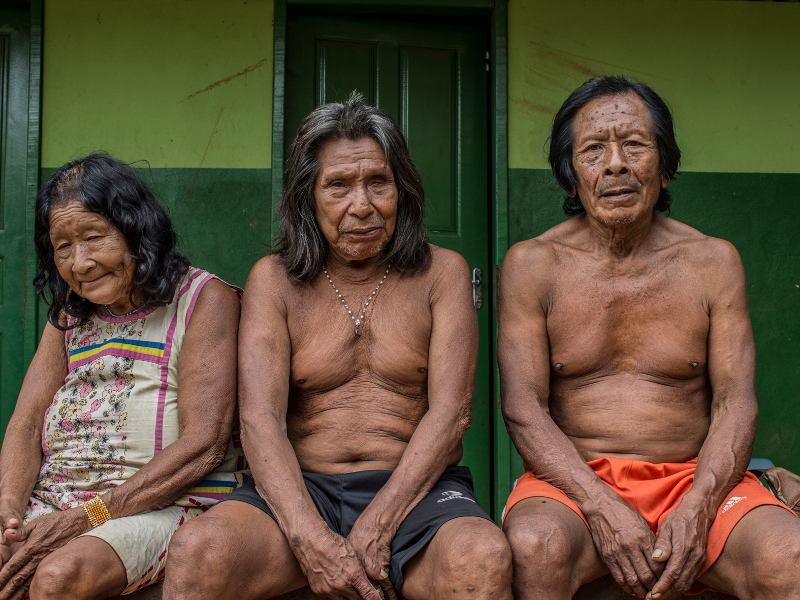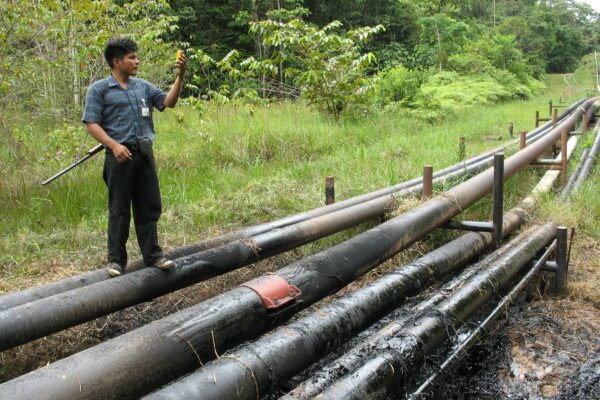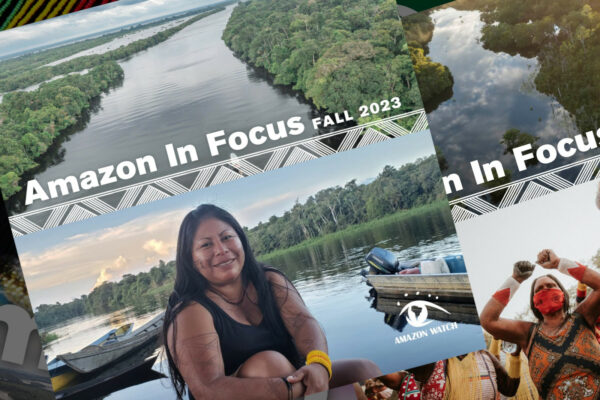
It does not come as a surprise to those who have followed the Belo Monte saga over the last six years that the mega-dam has been allowed to begin operating this year without first complying with most of its legally mandated socio-environmental conditions. Last month I returned to the region where Belo Monte is being built to give a nonviolent resistance workshop and took the opportunity to visit some communities and neighborhoods, in an attempt to get a clear perception of how people’s lives have changed, for better or for worse.
The city of Altamira
My first impression upon arriving in Altamira was actually positive, as the city seemed less chaotic then my last visit. For an Amazonian city it actually appeared to be doing well, until I started to dig. And it didn’t have to dig deep to see that some neighborhoods where half destroyed, forcing those who stayed on to live on an unhealthy and dangerous environment. Muddy ponds routinely pooled in the middle of unpaved streets, reaching people’s doorsteps in some neighborhoods.

Antonia Melo, leader of the social movement Xingu Alive Forever who was displaced by the dam, said that what changed the most in Altamira was the landscape, both on the river and in the city. Both have been destroyed. For her, the landscape is not separated from the people. People were separated from their lives surrounded by neighbors, their communities, and in many cases, from their own families. But what does that separation mean for these people? 16-year-old Karoline Militão claims that Norte Energia “tore her family apart” and now lives separated from her family at a boyfriend’s house. All she has now are memories from when she was with her parents and sisters surrounded by nut and cacao trees.

Violence versus safety
The displacement of communities seems to be just a part of the problem that robs the tranquility of Altamira’s people. In this small city eight people where murdered and six wounded on the same day just three months ago. I ran a quick survey when there, and violence seemed to be people’s primary concern.
Walking around the city I met Edivar Teixeira, a retired police officer. Edivar told me his story and how left his previous home in 1969 in search for an Amazonian promised land. Edivar has a self-endowed PhD in “Transamazonica”, or the study of the failures of Amazonian development. He contends that he’s witnessed all possible injustices that could be suffered by settlers in the Amazon. He remembers the time when a person would wait 8 hours to get medical attention. “Then Belo Monte came with enough money to solve all of our problems,” he said. “But instead it created more problems.”
Recent reports detail how Belo Monte’s construction came with a litany of unfulfilled promises, such as improved healthcare for local people. One of the project’s conditions obliged its consortium Norte Energia to build a General Hospital to serve a swelling local population. Built with major delays, the hospital remains closed and empty, with neither staff nor equipment to make it function.
Edivar is proud to say that back in his day, a few police officers in an old car were able to contain violence while today more than a dozen groups including Brazil’s Federal Police and National Guard with a helicopter can’t do it. In his words “Altamira is today the same as it was during the era of the Transamazonica [road-building mega-project of the 1960’s and 70’s]: outsiders came to open their small businesses and brothels to make their money and then return to their lives elsewhere while local people lose everything and are treated like 3rd class people.”
The potters
Walking through Altamira, I came to the edge of the river and was surprised to find an artificial beach created for the city’s residents in a place that is soon to be flooded. Perhaps it was put there to provide people some distraction. I encountered two local potters there, Almir Ferreira and his wife Elvira, who I’d met years ago at the potter’s workplace during a meeting to discuss their rights.
![Almir Ferreira and Elvira Ferreira of Altamira, Brazil. “We were expelled. They flooded our area and we lost our main work activity, our community and our tranquility. Now they make this beach to deceive people, but the reality is that it’s over, we lost everything. They compensated the potters with [indemnifications] ranging between $10,000-30,000 USD. How could one person rebuild their lives, their houses, and their professions with that? I ask myself, what country is this?” Photo credit: Maira Irigaray / Amazon Watch](https://amazonwatch.org/wp-content/uploads/2019/05/2016-bmd-mi-4.jpg)
Almir was outraged with the artificial beach and angry to remember the day he lost everything. He declared: “We were expelled. They flooded our area and we lost our main work activity, our community and our tranquility. Now they make this beach to deceive people, but the reality is that it’s over, we lost everything. They compensated the potters with [indemnifications] ranging between US$10,000-30,000. How could people rebuild their lives, their houses, and their professions with that? I ask myself, what country is this?”
The islands of the Xingu River
Across the edge of the river from the city “beach”, the first thing one sees – or nearly fails to see – is the island of Arapuja, now 3.7 square miles of razed and burned forest. Arapuja has suffered the same fate as all of the Xingu’s forest islands slated for flooding under Belo Monte’s stagnant reservoir.

When navigating the down river, only minutes away from the city, the Xingu’s waters and the lush and dense rainforest seemed untouched, seemingly resilient. I wondered if the river could speak, what it would say. Only those who knew the river before the dam can see it isn’t the same. As our boat driver Nonato pointed out, “The river has died; it doesn’t flow like before.”
Indeed, the river has somehow died. Upstream of the main dam, the water level raised 22 ft. while downstream the river has dropped the same amount.
My saddest surprise when navigating the river was to see Nonato’s island underwater. In fact, there wasn’t an island to see anymore. Every time I navigated the Xingu in the past, I got to swim on that beautiful small piece of paradise surrounded by fruiting trees. I remember his kids watching us from the window of their green house. What was it like to live surrounded by the Xingu waters? Where were they living now?
The fish saga
During my stay, I saw a television report about the Brazilian Environmental agency IBAMA’s fine of Norte Energia for US$2 million for burying tons of fish killed by dam construction, in order hide evidence of environmental crime and dodge accountability. Local community members claim that Norte Energia has a team to “clean up” their mess everyday and hide dead fish. Francisco, a “friend” I made at the airport from CCBM (the Belo Monte Construction Consortium), told me that Norte Energia‘s contractor Biota (the group responsible for managing the river’s fish), takes over 3,306 pounds of dead fish a day from the river. “People shut their mouths for little money, but they are clueless that after we are done with the dam, their lives will be over,” he contended.
The dam’s impact on the fish was never news. All the local communities and those who rely on the Xingu River’s fish for their survival have said from the beginning that the project brings deadly impacts to the region’s riverine biodiversity. Yet Norte Energia fairs to consider such impacts on the fish in the dam’s “early” stages.
Otavio Assunção from Ressaca Island told me that he saw a lot of dead fish one day while navigating the Xingu and called Norte Energia immediately to report it. According to Otavio, their response was to issue an apology stating, “[the fish die-off happened] because they had release too much water [from the main dam], and that would never happen again”. Three days later Otávio went to the same spot and it looked worse. Otávio and his fellow community members knew it would come to this, but didn’t expect Norte Energia would be so irresponsible and sloppy. “What can I think of them, other than they have no idea of what they are doing?” he said.
Mario Felix Juruna, from the Paquiçamba indigenous community also protested against the lack of information and general uncertainty: “We know that thousands of fish have died because of the residue of gunpowder used on the explosives at the work camps. Now, how can one know if the fish are contaminated or not? All I can say is that we feel very insecure.”
The Bacaja River
On the Bacajá River, a tributary of the Xingu that straddles the Indigenous Xikrin-Kayapo communities, the story gets repetitive. Bepnotoi Xikrin, chief from Morotija community said that the water is green, and it looks like mud. The fish died and it has become impossible to navigate the river because it’s too dry. “As expected most of conditions were not met and we have been abandoned here,” he said. “Another problem is that our well is not functioning as it should, forcing us to drink the muddy water from the river.”
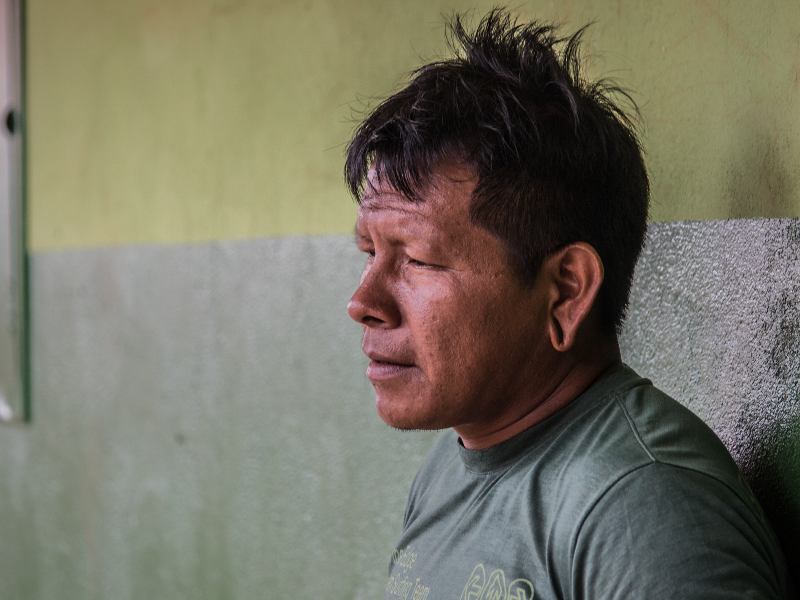
The boat drivers
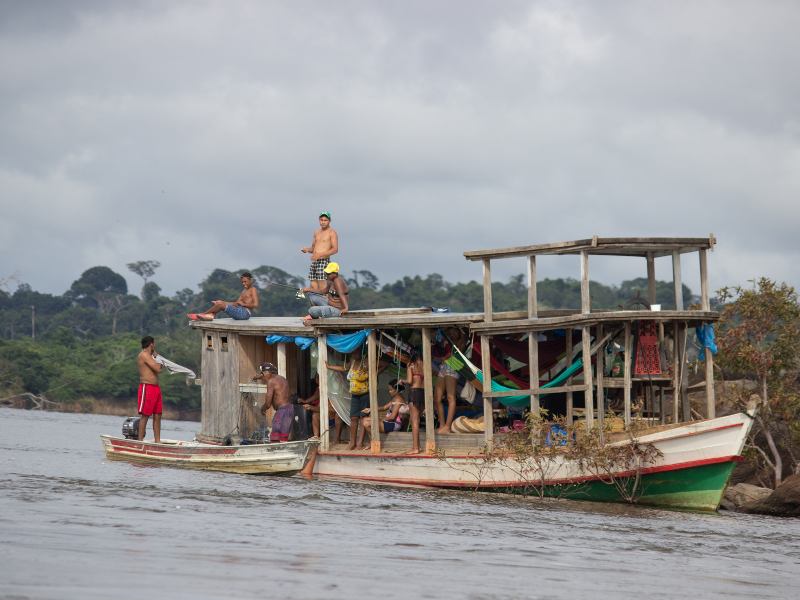
Navigating the Xingu downstream, I couldn’t help but notice how life has changed for the boat drivers as well. Raimundo Gonçalves das Chagas, our boat driver had worked on the Xingu since 1998. As he likes to say, he was born and raised on the river. Raimundo didn’t lose his job, but he lost his clientele and his route. His earnings dropped more than 70%, but in the eyes of Norte Energia Raimundo is not considered to be impacted by the project. When we returned with him to Altamira at we got lost simply because the river isn’t the same anymore, and he couldn’t recognize the route.
The transposition system
How could we not mention Belo Monte’s transposition system? The “system of the future” consists of a tractor that drags a boat out of water with the help of a worker that needs to get in the water for it to work. The boat’s passengers are then taken by van to the other side of the river where their boat is lowered into the water and allowed to continue on its way.

Francisco Pereira, a miner from Ressaca Island denounced the typically long wait times to cross this artificial barrier, and how the tractors damage smaller boats. As someone who used to navigate the river freely, Francisco called the system “humiliating.”
The Arara community
The indigenous Arara community is without a doubt Belo Monte’s most impacted, and it is the first stop after the absurd transposition system. Stopping there brought back old memories, from when the leader Zé Carlos Arara humbly received me in his house. Well, there is no more Zé, or a community per se. Everyone moved to the new brick houses Norte Energia is building. Zé Carlos, the old leader Leoncio Arara told me, moved to a new location to build another community with the payoff he received from Norte Energia to withdraw his resistance to the dam. Could we blame him?

The only person that refused to move was Leoncio and one of his sons, who is now a leader. Leoncio’s place is as simple as one can get – one room, old wood, earthen floor, palm leaf roof – as opposed to the “new” Norte Energia houses that are spacious, with ceramic floors and bright white walls.
“I don’t know how it would be for us with this dam. What I do know is that we will be alone. There is no well, the road is bad, the river is full one day, and dry the next. What can we do? We suffer from the water and from the land, and from both Belo Monte and [the mega-mine] Belo Sun,” he sighed.
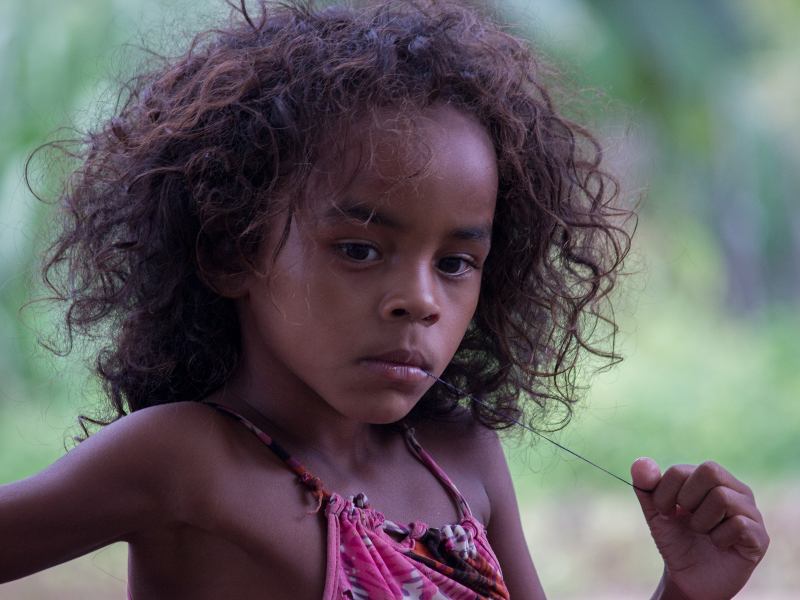
The Paquiçamba community
The Arara are not alone on this journey, as other communities also downstream are going through the same trials. At the Paquiçamba community, Marino Felix Juruna said that since the beginning of the Belo Monte dam construction everything has changed: “All the peace we had changed. Before Belo Monte we had no material goods but we did have peace. Now for each day spent on my community I spend three more in the city running around to endless meetings without any real resolutions. Then I come back and realize I can’t even plant my own food anymore. The river is dry, the water has changed its temperature, the mosquitos are all over the place, and the fish have died. The fish that haven’t died have lost their flavor and are not as juicy as before. Norte Energia is always walking around our territory without letting us know ahead of time; we have no control over that. All of those things are impacts we are suffering. We lost our livelihoods, our way for survival. We used to survive from fishing artisanal and ornamental fish but that is over. Norte Energia did nothing to mitigate such impacts. In fact Norte Energia only brings problems, and never brings solutions. But we can’t give up as we are right at the mouth of the jaguar.”
Marino was right, they are “right at the mouth of the jaguar”, meaning, they where literally sandwiched between the Belo Monte dam and the Belo Sun mine. In fact, after the Arara community the Juruna people of Paquiçamba are next in line for these two mega-project’s impacts, living in constant fear and insecurity of what these projects will bring.
The islands of Fazenda and Ressaca
The islands of Fazenda and Ressaca are fairly close to one another and home to local miners who also happen to be fisherman and settlers, all gravely impacted by the Belo Monte dam and the Canadian mining company Belo Sun.

In the words of Otávio Assusção Cardoso’s, a very knowledgeable man at Fazenda Island, “We are abandoned here. I have not seen anything getting better. In fact I only see destruction since Belo Monte came. We lived in paradise, now we live in the middle of a conflict. Everything around us is filled with gunpowder [residues]. We heard already that the dam has cracks and we know that Norte Energia will never admit that publicly, so we live here in fear that at any time their walls might break and we might die, such as the people from [the mine tailing dam disaster] Mariana.”
The insecurity is such that Francisco Pereira Silva, president of the miners association, said that the day Norte Energia opened the floodgates without warning the water raised 22ft. in less than an hour, creating a sense of desperation and horror. On his words “we all thought the dam broke and went running with our families uphill where we spent the night, fearing the worst, to only learn the following day that it was a procedure Norte Energia ‘forgot’ to tell us about. It’s entirely disrespectful. How can a mother or a father sleep in peace with so much fear anything could happen at anytime?”
On the other hand, Belo Sun Mining hasn’t been cooperative, nor transparent, in their work. Francisco and his friends were very upset when the company went to the Federal Police to file a claim claimimg that Ressaca Island people were only “old, drugged, poor and rapists,” and that the region’s biggest prostitution center was based there. The statement outraged those living and working at Ressaca legally for the past 35 years, such as Francisco, who are now called “invaders”, and are not considered impacted by the dam or mine.
The price of development
My journey ended with a last dive on the Xingu River during an astonishing sunset. For a second all I felt was peace, soaking in natural feeling of this still-living and sacred place. But was I at peace?
How could I ever be at peace after witnessing all I did in this past six years, such as the displacement of thousands of families, before, during and after; the destruction of vast, lush forests; the massive die-off of animals, most of which were fish; the transformation of a small sleepy town into a boomtown now filled with violence, impunity, prostitution and fear; the slow destruction of indigenous culture and tradition; and, the coercion and punishment of the ones who fought for their rights, while a government-sponsored dam-building mafia is allowed to operate above the law? How could I ever be at peace after watching one of the most beautiful rivers I have ever seem die little by little?
I could not and cannot be at peace. There was a mixture of gratitude for that sunset with the pain of feeling that no matter what I did, I couldn’t magically change the fate of my friends on the Xingu because in the eyes of outside world, their suffering was just numbers, statistics, and for some, profit.
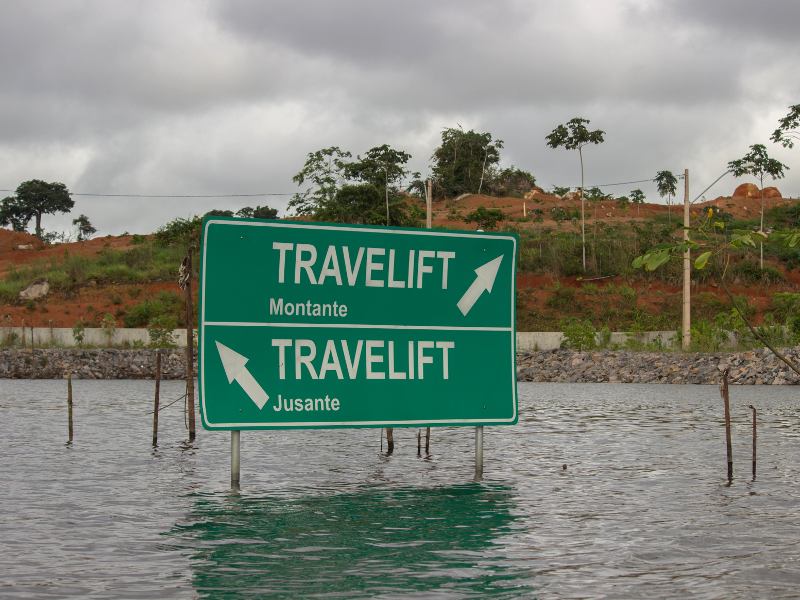
Nonetheless, the struggle goes on, and this slow work of empowerment and consciousness is slow but fruitful. The Belo Monte dam might have been built, but the fight for justice is endless, and we shall overcome.
As for the price of what we call “development”, the question that remains will always be development at what cost, and can we continue to bear these costs?


